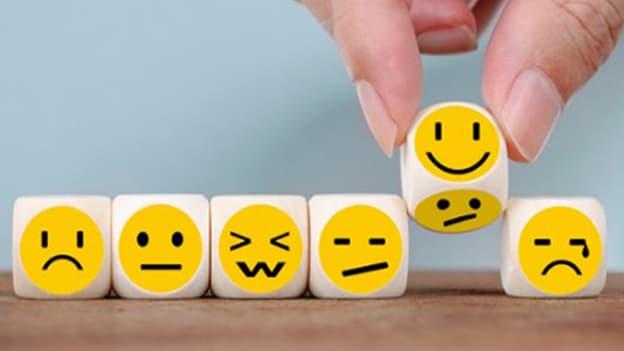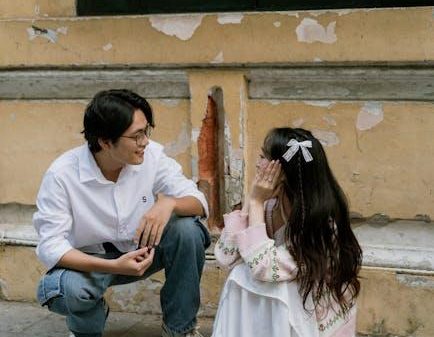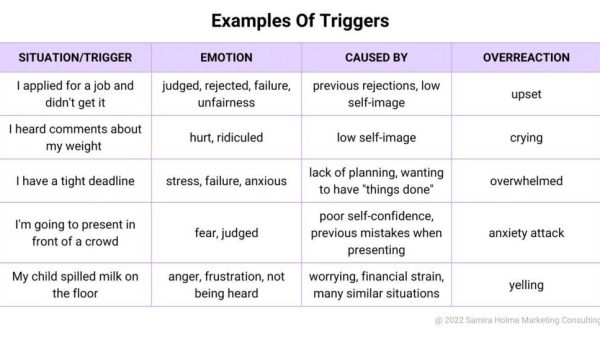In the tapestry of human connections, relationships are the vibrant threads that weave our lives with color and warmth. Yet, even in the most intricate patterns, there can be knots and tangles—those emotional disconnects that can leave partners feeling adrift in an ocean of unspoken words and misunderstood gestures. Addressing these disconnects is not merely about repairing what feels broken, but about rediscovering the rhythm of two hearts beating in harmony. This journey requires patience, empathy, and a willingness to delve into the depths of our own emotions as well as those of our partners. In this article, we will explore practical steps and insightful strategies to bridge the emotional gaps, fostering a deeper, more resilient connection that stands the test of time. Whether you are in the throes of a new romance or nurturing a long-term bond, understanding and addressing emotional disconnects is a crucial step towards a more fulfilling and harmonious relationship.
Understanding the Roots of Emotional Distance
Emotional distance often stems from a variety of underlying issues that, if left unaddressed, can gradually erode the intimacy and connection in a relationship. It’s essential to explore these roots to effectively bridge the gap. Common causes include:
- Past Experiences: Previous relationships or childhood experiences can significantly shape how individuals express and perceive emotions. Unresolved traumas or negative experiences can lead to protective emotional barriers.
- Communication Breakdown: A lack of effective communication often leads to misunderstandings and assumptions. When partners stop sharing their thoughts and feelings, emotional distance can quickly grow.
- Stress and External Pressures: Life’s challenges, such as work stress or family obligations, can divert attention away from nurturing the relationship, leading to feelings of neglect or isolation.
- Different Emotional Needs: Each person has unique emotional needs and ways of expressing love. When these needs aren’t met or acknowledged, it can create a sense of disconnect.
By recognizing these factors, partners can begin to address the emotional chasm with empathy and understanding. Acknowledging the roots of emotional distance is the first step towards fostering a more connected and fulfilling relationship.

Cultivating Open and Honest Communication
In the intricate dance of relationships, the ability to communicate openly and honestly forms the bedrock of emotional connection. To bridge the gap when emotional disconnects arise, it’s essential to create a safe space where both partners feel heard and valued. Begin by actively listening—this means not just hearing words but understanding emotions and intentions. Acknowledge each other’s feelings without jumping to conclusions or offering unsolicited advice. This approach fosters trust and allows for a more genuine exchange of thoughts and emotions.
- Validate each other’s experiences: Recognize that each partner’s perspective is valid, even if it differs from your own.
- Practice patience: Emotional reconnection takes time, and rushing the process can lead to further misunderstandings.
- Express vulnerability: Share your own feelings openly to encourage your partner to do the same.
Integrating these practices into your relationship can transform misunderstandings into opportunities for growth, leading to a more harmonious and fulfilling partnership. Remember, the goal is not to avoid conflict but to navigate it with empathy and respect.

Rekindling Emotional Intimacy Through Shared Activities
Reconnecting emotionally often starts with rediscovering the joy of shared experiences. These activities don’t have to be grand gestures; rather, they should focus on spending quality time together in a way that fosters genuine connection. Consider trying out a few of these ideas:
- Cook a meal together: Choose a recipe that neither of you has tried before. The process of creating something new can spark conversation and laughter.
- Explore a hobby: Whether it’s painting, hiking, or learning a new language, diving into a shared interest can create a sense of teamwork and mutual growth.
- Unplugged evenings: Dedicate one night a week to turning off all digital devices. Use this time to play board games, have deep conversations, or simply enjoy each other’s company.
- Volunteer together: Working towards a common cause can deepen your bond and provide a sense of shared purpose.
By intentionally choosing activities that both partners find fulfilling, you create opportunities to strengthen emotional ties and rediscover the nuances that initially drew you to each other. In the gentle rhythm of shared activities, emotional intimacy can flourish naturally, bridging any disconnects that may have formed over time.

Seeking Professional Guidance for Lasting Connection
When navigating the intricacies of emotional disconnects in relationships, seeking the guidance of a professional can be a transformative step. A therapist or counselor can offer an unbiased perspective and provide tools to help both partners articulate their feelings more effectively. Key benefits of professional guidance include:
- Improved Communication: Learn strategies to express emotions and needs in a constructive manner.
- Conflict Resolution Skills: Develop techniques to address disagreements without escalating tension.
- Deeper Understanding: Gain insights into underlying issues that may be contributing to the disconnect.
Professional support can also create a safe space for both partners to explore their emotional landscapes, fostering a deeper connection. By committing to this process, couples can work towards a more resilient and empathetic relationship, equipped with the tools to address emotional challenges as they arise.








